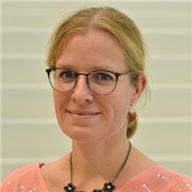In a recent development, in addition to purchasing and generating electricity, electricity consumers are now also permitted to share their self-generated energy with other consumers, for example, in the form of an energy community. This has many ecological and social benefits. In order to be able to stimulate such activities, VITO/EnergyVille were asked by the Flemish energy regulator VREG to investigate whether these activities qualified for lower net tariffs.
Net tariffs are costs on the energy bill that serve to cover the costs of the grid operator for investments in and maintenance of the distribution network. They apply to all customers. If it is possible to prove that energy communities reduce these costs, then this would justify a reduction on the net tariffs.
That is why, on behalf of the VREG, experts from VITO/EnergyVille studied to what extent collective activities in Flanders can contribute to easing the strain on the distribution network and to reducing the costs for the grid operator, and whether they could therefore be entitled to a reduced net tariff. To do this, the experts conducted an intensive, quantitative cost-benefit analysis. In this analysis, three types of collective activities were simulated hundreds of times: an energy community in which the consumers take electricity from the same cable (‘feeder’), a large block of flats with an electrical cabinet in the building, and a small apartment building connected to feeder to which other consumers (who are not part of the energy community) are also connected. The simulations mapped how the electricity profile of an individual consumer changes when joining one of the three collective activities.
No reduction in net tariffs
The results of the cost-benefit analysis do not demonstrate general and sustainable added value of energy communities for the distribution network. Some energy communities certainly do bring advantages for the distribution network, but this was not always the case. Since the net tariffs apply to everyone, it must therefore be concluded that reduced net tariffs for such activities are not recommended for Flanders.
The lack of clear added value is mainly due to the fact that the peak of consumption by individual consumers within a collective activity is insufficiently aligned with the moments when collective activities are generating their own solar energy. Indeed, the consumption peak is often in the evening and in the winter (when little solar energy is produced). This means that, in general, collective activities have little impact on the investment needs for the grid operator. Even so, the study does confirm that, in the case of particular conditions and configurations, collective activities can be beneficial for the distribution network. But these benefits depend on many things: for example, they must be located in part of the distribution network where the grid operator already has high costs, for example, due to outdated network infrastructure. If the benefits are found in a location where the grid operator has recently installed new cables, then it will be much harder for an energy community to reduce costs.
Finally, the experts from VITO/EnergyVille added several notes to their conclusions. Indeed, all Flemish ‘prosumers’ currently have the same net tariffs, whether they live in a detached house or collective flat building. However, for residents of the latter, the roll out of renewable energy is much more complex and this situation should therefore be investigated in more detail.
Furthermore, increased electrification in the long term can increase alignment of the consumption peaks by individual consumers (for example, everyone charging their electric car at the same time), which could cause the distribution network to become overloaded. Targeted system triggers could relieve this problem, according to experts, and they advise further research. Finally, it is true that energy communities provide all kinds of other ecological and social advantages that are unrelated to the distribution network. It is also important to emphasise these advantages.


